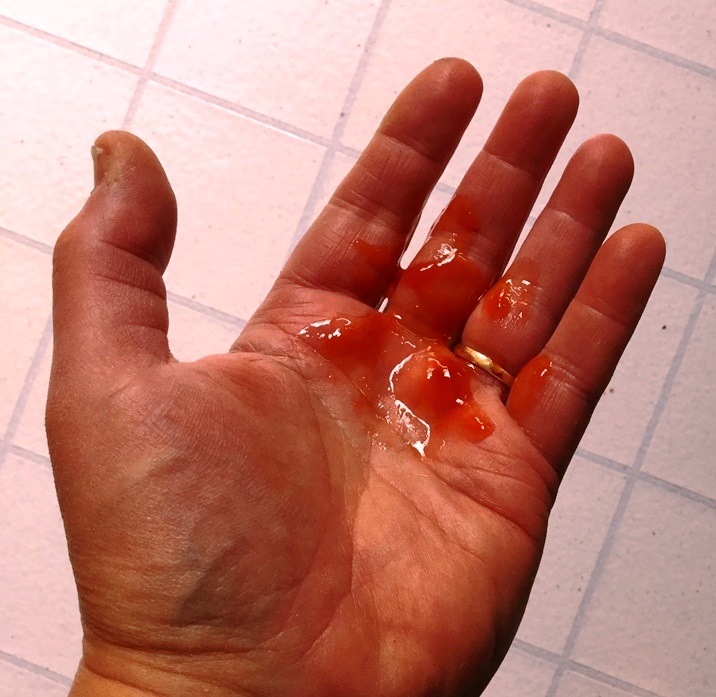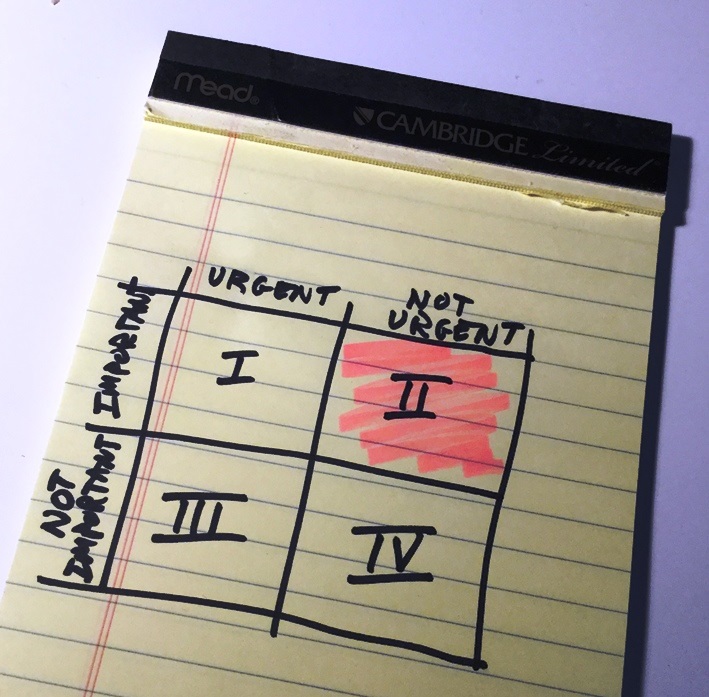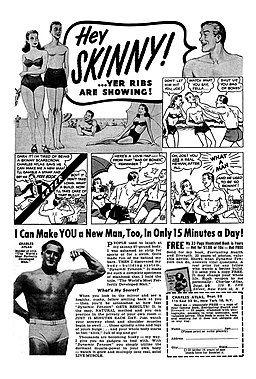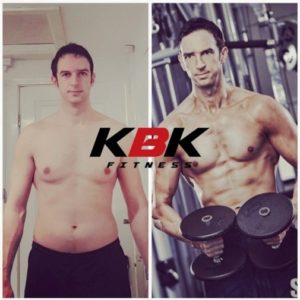In this week’s newsletter
This week we welcome new columnist Sarah Trammell who is an application analyst at a university in Georgia. We also offer our congratulations to Jimmy Vo and his wife on the arrival of their new baby and look forward to Jimmy’s column returning in the near future. Also in this issue: Seven stress mitigation strategies for overworked IT pros. Fitness without external competition and blood sucking fitness bands from hell. Where It All Began. Try something new! Yin Yoga and 4 sequences for you to try. My weight loss story.
Enjoy this week’s issue of FitITproNews and feel free to send us feedback on any of the topics we’ve covered — we love hearing from our readers!
Cheers!
Mitch Tulloch, Senior Editor
Subscribe to FitITproNews!
Subscribe today to our FitITproNews newsletter and join 200,000 other IT professionals around the world who receive articles, stories, and tips on exercise and nutrition that can help you transform yourself from a fat IT pro to a fit IT pro! Just go to this page and select FitITproNews to receive our monthly newsletter in your inbox! You can also find the latest issues of our newsletter online at fititpronews.com while back issues from our first two years can be found in our old archive.
Disclaimer: I am not a certified fitness professional or nutritionist so take any suggestions made here “as is” with a grain of salt and a heaping supply of your own judgment. Please read our full disclaimer at the bottom of this newsletter.
Send us your feedback!
Got feedback about anything in this issue of FitITproNews? Email us at [email protected] today!
Seven stress mitigation strategies for overworked IT pros (Mitch Tulloch)

Mitch Tulloch is the Senior Editor of FitITproNews and a recovering fat IT pro who lost 50 lbs in midlife and is now on his way to becoming a fit IT pro. Mitch is a widely recognized expert on Windows Server and cloud technologies who has authored or been Series Editor of numerous books/ebooks from Microsoft Press. Mitch is also the Senior Editor of WServerNews and writes frequently for TechGenix.
Hi everyone! Before I get to my main topic let me give you a brief update on my progress with weightlifting. This saying that came to mind after yesterday’s workout pretty much sums it up:
“You know you’ve had a good workout if your hands bleed afterwards.”

Warning: graphic image! This photo is only a simulation. The author does not hold any stock in Kraft-Heinz, Inc.
I think what happened was that when I maxed out my deadlift at 235 lbs I tore one of the calluses that had developed at the base of my fingers from doing barbell exercises. I don’t use straps or gloves when I weight lifts because, well, real mean don’t do that kind of stuff 😉
What’s new is that I finally decided to set a goal for how heavy I want to lift. My target will be 325 lbs which is about one and a half times my bodyweight. At my age I don’t think anything heavier is realistic (or safe) and I think I may eventually be able to manage 3-4 reps at this weight. Anything higher might cause an injury, and any more reps than that could overstrain my heart. My guess is that it’ll take me at least a year to reach this goal given that I’ll need to be careful to improve my deadlifting form to ensure no injuries.
Yesterday’s workout had me supersetting deadlifts with T-bar rows, starting at 135 lbs for 10 reps and gradually building up to a final weight of 235 lbs where I did 4 reps of deadlifts followed by 10 reps of rows. And by the way, when you do a T-bar row you don’t need to remove the plates from one end.
And now on to stress and how you can mitigate it.
We’re all feeling pretty stressed out these days because of the pandemic situation, right? Readjusting to new ways of performing our work, enduring social isolation, nowhere to go out to shop or eat in a restaurant, kids doing schooling at home and driving parents crazy, etc. Some of us are doing better than others depending on which city or country we live in, and most of us still have jobs since we work in the IT industry. But overall we’re experiencing new levels of stress in our lives. How can we cope better?
Obviously exercising and eating right are part of the stress-reducing equation. But how much exercise is right for us when we’re experiencing extraordinary stress in our work and lives? My own thinking which I’ve expressed before in this newsletter is that it’s best not to overdo it with exercising during these times. For example, if running is your thing then adopt the mindset that you’re running towards a goal, not away from what’s happening in your life. If lifting weights is what you enjoy doing, then enjoy it instead of trying to punish your body — weightlifters often aim for pain and use muscle soreness as an indicator of a successful workout. And if you’re bummed out because you can’t enjoy your favorite sport because of social distancing restrictions, take up a new challenge like trail running that can provide much of the broad range of muscle activation benefits that sports can provide, plus you get lots of sun and fresh air.
The second thing you want to include in your exercise regime to reduce stress is more recovery. This not only means more sleep (yikes! difficult for us IT pros when we’re on call 24×7!) but taking extra recovery days and eating enough protein and healthy fats. And also enough carbs right after working out your immune systems isn’t compromised. This is not the season for us “recovering fat IT pros” to try and lose more weight by limiting our caloric intake. Aim instead for eating your daily caloric maintenance level, and just target staying healthy instead of trying to slim down. And if you’re so used to dieting that you find this difficult, try doing what I do by supplementing with the occasional goodie — like a slice of Black Forest Cake:

Regular supplementation with Black Forest Cake has been shown to reduce stress by 10,000%
The third thing I recommend you do is take short leisurely walks as often as you can. Walk around the block after lunch. Stroll down the street with you dog in the evening. Slow walking reduces stress hormones in your body, or so I’m told.
My fourth idea for reducing stress came to me after reading this article in the New York Post. The study suggests that increasing your testosterone level could make your immune system stronger and make you less susceptible to the effects of the Coronavirus should you become infected by it. One way you can increase your T level is by incorporating more resistance (e.g. weight) training in your fitness routine, especially doing compound (full-body) exercises like deadlifts and squats with barbells using moderate to heavy weights. Also be sure to get enough zinc and selenium in your diet — I eat a few brazil nuts each morning for selenium supplementation, and I also take a 50 mg zinc citrate tablet every day. Cold showers are also good for boosting testosterone, if you can stand it. And all this advice applies not just to men but women as well.
My fifth recommendation is something that has helped me a lot over the years in dealing with stress associated with my job as an IT pro is the Time Management Matrix which I learned about from reading Stephen Covey’s books many years ago. This simple planning tool helps you organize your priorities which helps mitigate stress when you’re faced with fighting fires like those of us who work in IT frequently have to do:

Spending time in Quadrant 2 won’t put out fires but it can prevent them from happening!
This tool revolutionized my work life. The way it works as follows. You divide up the tasks you need to do by organizing them into four quadrants:
- Quadrant 1: Tasks that are important and urgent
- Quadrant 2: Tasks that are important but are not so urgent
- Quadrant 3: Tasks that are urgent but are not very important
- Quadrant 4: Tasks that are neither important nor urgent.
The problem most of us face especially in IT is that we spend too much time with Quadrant 1 activities like answering emails, meeting deadlines and fighting various kinds of fires. This keeps our stress level high and gives us no time to think about the future to plan effectively for it. The key to lowering your stress level is to start each workday by prioritizing Quadrant 2 activities. Such activities while not urgent are essential for both short- and long-term success, and they include things like planning, strategizing, identifying opportunities, establishing business processes, and building relationships. I’ve found that I’m much more productive if I begin each day in Quadrant 2, and sometimes I even end up spending most of the day in this quadrant building for future success in my business. In fact occasionally when faced with a pressing deadline I simply ignore it, realizing that the fallout from missing a project’s deadline is probably less than the damage from not planning future projects effectively.
My sixth suggestion is for those of our readers who have suddenly found themselves having to work remotely from home instead of at the office. Take some time to look closely at your improvised home office and see whether you can improve it to make working from home easier and less stressful. Examine each element of your home office arrangement including furniture, lighting, office equipment and decor. Do you need a sofa so you can take a comfortable break occasionally? How about a Nespresso machine for a quick picker-upper in the afternoon? Is your monitor big enough for the video conferencing you need to do? Do you need a second laptop? Does your room smell OK? Should you move your work area to another part of your home? How about ordering a new IKEA shelving/storage unit to replace that ratty old bookcase? And how about setting up a dartboard with your boss’s photo on it so you can take out your frustrations when your stress level pegs at 100%? P.S. Don’t put the dartboard on the inside of the door in case your wife or husband suddenly walks into your room.
My seventh and final suggestion for stress mitigation is…umm…well I can’t think of another one so if you readers have something to suggest you can email me at [email protected] and we’ll include it in the Mailbag of our next issue 🙂
That’s it then until next month. In the meantime keep reading below for some terrific articles from our other newsletter columnists.
Oh and by the way, this issue marks our 100th issue of our FitITproNews newsletter! You can find our recent issues here while newsletters prior to August 2019 can be found in our archive. Enjoy! And thanks for reading FitITproNews. And please tell others about our newsletter — they can subscribe to FitITproNews and our other TechGenix newsletters here.
Stay safe and healthy!
–Mitch
Fitness without external competition and blood sucking fitness bands from hell (Robin Camp)

Robin Camp works as tech support for an Orthodontic Practice Management Software company called New Horizons Software ( www.nhsoftware.com). As a professional photographer on the side, Robin does fashion, glamour weddings and more in his spare time (www.dancingwithlightphoto.com). You can also now find him working out on Instagram at https://www.instagram.com/fitittech/.
“It is not death that a man should fear, but he should fear never beginning to live.” –Marcus Aurelius
So these last couple months have been…. Interesting. Most of us are busier than ever helping people work from home while we are trying to keep our fitness lifestyle engaged, despite local stay at home orders.
So what have I discovered about myself as I have gone from working out 10 hours a week to scrambling for some rudimentary exercise tools as I try to stave off losing my gains?
First off, I realized that more than anything, the gym was providing a competitive environment for me. As my training partner made progress, I HAD to make at least as much progress (and that’s hard when your training partner is 15 years younger than you and seems to have unlimited energy). These last couple months have really helped me realize personally why I had a hard time in the home gym atmosphere, I thrive on the sense of competition, seeing others progress and using it as motivation to push myself further. As I have realized this, I have had to establish a strict routine with goals that pushes me.
For example, walking into the bedroom that has a pull up bar, I now have to do as many pullups as possible, it doesn’t matter if I have already done 30 today, do as many as I can in one set.
Transferring files to a client? Do as many shoulder raises with a pair of dumbbells as I can while waiting for the transfer to complete
Listening to a customer ramble for 15 minutes knowing full well if they just let me get a word in edgewise I could have fixed their problem 13 minutes ago? Grip exerciser on the desk is great for stress relief and the forearms.
Longer phone call? How many calf raises can I get in before I have to sit down
I have been finding that this approach is helping me stick with my routine a little better.
On another note, fitness bands, some people swear by them, me, I think they are trying to kill me. A great idea perhaps in theory, but where do you mount these blood sucking stinging monstrosities that doesn’t break?!!! One busted door sill, a broken desk and a bleeding skull made me realize that these evil things may not be for me.
On a mental health note, I would strongly suggest the book Quiet by Susan Gain, it’s an in depth analysis of the strengths and weaknesses of introverts and extroverts that covers how to communicate with your opposite group without getting stressed. It has been helping me understand where some of my customers are coming from a little better.
“I’ve missed more than 9000 shots in my career. I’ve lost almost 300 games. 26 times, I’ve been trusted to take the game winning shot and missed. I’ve failed over and over and over again in my life. And that is why I succeed.” –Michael Jordan
Where It All Began (Kris Lall)

Kris Lall works as a product manager in the tech industry for an enterprise software manufacturer. As a youngster, Kris was consumed with soccer before technology came along. Now he’s consumed with both. You can find him on Twitter at the not-too-surprising handle @krisoccer.
I don’t know how many times I read a comic book back in the 1970’s and was exposed to that Charles Atlas ad on the back page:

Back then, I was the scrawny kid in the comic strip ad that the bully described as a “bag of bones” or “97-pound weakling”.
This got me thinking about who this Charles Atlas fella was and how he plays into today’s exercise-conscious (obsessed?) culture.
Angelo Siciliano was born in Italy way back in 1892 before moving to Brooklyn, New York in 1903. He passed on to the great gym in the sky in 1972. Angelo was “rebranded” Charles Atlas when a friend told him he looked like a statue of the Greek god Atlas that appeared on top of a hotel. According to lore, Atlas was the god tasked with holding up the celestial heavens for eternity. Gotta be fit to do that!
Mr. Atlas’ ad campaigns supposedly reflected his own story of being a 97-pound weakling, getting sand kicked in his face at the beach and building up his body before exacting retribution on the man who had previously bullied him. Atlas got the last laugh, as his self-developed exercise routine ultimately led him to being voted “Americas Most Perfectly Developed Man” in 1922.
Atlas codified his exercise regimen into a popular fitness course with activities that could be performed outside of a gym. Many well-known people have taken his courses over the years, including boxing champions Rocky Marciano and Joe Louis.
Think about it. Atlas’ print advertising, which he began publishing in the 1930’s, has influenced generations of scrawny kids to get in shape and bulk up. It makes me wonder whether any other marketing campaign has been as widespread and influential over the past 100 years? Further, how many of us are getting fit in part because of the marketing prowess of Charles Atlas?
References: https://en.wikipedia.org/wiki/Charles_Atlas#Comics
Try something new! (Kris Kane)

Kris Kane is a North Yorkshire based personal trainer, martial arts instructor and general fitness enthusiast. You can find him on Instagram at @koachedbykris and also view him professionally on LinkedIn at www.linkedin.com/in/kris-kane.
Hope everyone is staying safe and well. I think it’s fair to say that the current situation has affected most people’s training routine and I know for many it has taken a back seat altogether whilst we adjust to a different way of living.
I too have struggled as I’m used to being in the gym or at the studio teaching my classes. Working from home for my IT role has also meant there has been no change of environment from home life, work, and where I can train.
Working out comes with many associated physical benefits but I have also given it equal credit with helping manage mental health and reduce stress levels which is vitally important especially at a time like this! Making time to do even 20-30 minutes training, 3-4 times a week, has really helped clear my head, keep me focused and as positive as possible.
Although I haven’t been able to exercise how I normally would I have used the opportunity to try different activities and improve in other areas. I’ve been on some runs (I’m not a runner in the slightest!) and have set myself a challenge of beating my time round a set 5km route. I’ve also done some really good home workouts that even with just the odd weight plate and band I had lying around can add enough resistance to really make it challenging. I have also spent more time on stretching and mobility which the more I’ve done, feel will compliment my regular schedule, whenever that can resume….
My advice is if you aren’t already, try and keep some sort of training in your weekly routine. It might not be the style you are used to but you should feel better for doing it and you might find a new passion for something you wouldn’t of done otherwise, so don’t be put off trying something new.
If you are at a loss as to where to start with doing something I have a free home workout guide with 8 different workouts for you to have a go at. Just drop me an e-mail at [email protected] or via my Facebook page where I will be posting more tips on training, nutrition and mindset: https://www.facebook.com/kbkfitness/

As always, good luck with your training and let me know if you have any questions.
Stay safe!
Kris.
Yin Yoga and 4 sequences for you to try (Lana Khazari)

Lana Khazari is a Technical Support Analyst for the Corporation of City of Windsor, Ontario, Canada. She is also a Precision Nutrition Coach, Personal Trainer, Fitness Instructor and a Yoga 200-RYT Instructor. You can find her online at lanakharazi.com.
We are living in a Yang world and I’m a Yang girl most of the time. Work, momming, lifting, and instructing can leave me pretty spent. It’s all go-go-go. So when I found the “yin”-life, I knew I needed more it.
From Hatha to Ashtanga, western yoga practice benefits what westerners desire. This often leads to a more physical practice. These forms of yoga are dynamic, active practices that work the muscular half of our body. All great for increased mobility, flexibility, and muscle tone. Muscles are “yang” tissues that live on the fiery side of the ancient yin/yang symbol.
However, if you have been practicing mostly “yang” styles of yoga you may have only experienced part of the benefits.
There is no Yang without Yin. They complement, are always changing, and never static. Yin yoga is based on this Daoist concept. In the Western world, our lifestyles rarely reflect the need for balance. We go-go-go until the universe forces us to pay attention. It’s common to run ourselves into exhaustion, crash hard, and finally call in for our sick-days. If Yang is go-go-go, Yin is a complete halt. Think of it as two plates of a weight scale, if one side is too heavy, the scale tips out and balance is lost. The rebalancing of the scale is what the Chinese refer to as the “return to the Dao”; the tranquility found at the centre of all events, the return to wholeness, and health.
Yin yoga, referred to as the other half of yoga, works into the deeper tissues of the body. The poses or “asanas” are held for much longer and anywhere from 1 to 20 minutes! The goal is to access the deeper “yin” tissues like our ligaments, joints, deep fascial networks, and even our bones while connecting with a more meditative state.
What does it mean to be the “other half”? Yin and yang are relative terms that can be used in many contexts. In terms of flexibility, yang is stretchy and elastic and yin is something less yielding. In terms of tissues, yin tissues are the deeper more plastic tissues like joint capsules, bones, tendons, and cartilage. Yang tissues are muscles.
If you intend to work on mobility and increase your range of motion or ease of movement, it turns out that “yin” tissues are more responsible for restrictions.
A study done in 1960 shows us that 41% of what restricts us are our muscles but 47% are our connective tissues. So, if you intend to increase your range of motion then Yin yoga will be better for that.
Not to forget, when we get older, and more yin-like, we need a yin form of exercise to help keep us mobile through stressing these connective tissues. In Yin yoga, we stay in the pose longer so that we can soak right into those tissues.
Yin yoga is also great for reducing stress and providing restoration for the mind as well as the body. It is also great for mobility, circulation, and regulating energy flow. You will notice that many sequences target energy channels and meridians similar to that of Acupuncture.
There are three simple and effective principles we follow in a Yin practice. We first play our edge, going just far enough into the pose to feel a sensation. Second, we resolve to be still. Here, no matter what urges arise in the mind, or sensations arise (aside from pain) in the body, we remain still. The stillness of the body, breath, and mind requires deep awareness. Third, we hold the pose for time. Yin tissues are not overly elastic and require long-held amounts of traction to become stimulated
Here are some of my online ZOOM Yin yoga led practices if you would like to give it a go:
- Yin Yoga for Anxiety: https://vimeo.com/406555242
If you are feeling anxious, stressed, and depleted, this practice is very calming and soothing The focus is to balance kidney “chi”. “Chi” or Qi represents energy in traditional Chinese medicine The kidney meridian relates to the health of low back, adrenals, bones, and joints. The kidney is the powerhouse of the body, supplying reserve energy to any organ running low on “Chi”
- Yin Yoga for the Hips: https://vimeo.com/404031419
You will sink into some deep hip openers in this one. This is great for those who sit all day. The focus is on lengthening, rather than engaging and an excellent way to relieve tight hips. Hips openers are also known to release stored emotions. Feelings of fear, sadness, and anxiety are stored in the hips.
- Yin Yoga for the Heart: https://vimeo.com/401644759
This Yin yoga sequence focuses on the heart meridian. The poses focus on the upper body and inner arms and suitable for all levels. The Daoist view of the heart includes virtues of peace, joy, contentment, and tranquility. This practice helps to eliminate nervousness to experience order, forgiveness, and peace. Finding peace aids in the ability to love ourselves as well as others.
- Yin Yoga for the Lower Back: https://vimeo.com/416770663
If you often experience low back pain, this one might be for you. You hold the poses even longer in this sequence to allow you to relax deeply and relieve tension in the lower part of the spine.
If your stiff and sore and have a desk-bound lifestyle, these simple yet challenging sequences can help provide relief. They will leave you more mobile and less locked-up. You can follow me for more Yin yoga practices at Healthy Solutions LIVE on Facebook.
My weight loss story (Sarah Trammell)

Sarah Trammell is an application analyst at a university in Georgia. She became interested in health and fitness issues when she began making diet and lifestyle changes to lose weight back in 2007 and learned even more when trying to track down what to do about other health issues beginning in 2011 with not much input from doctors. You may follow her blog at ihatemyglutenfreelife.com.
I started losing weight when I began doing 8-minute Tae-Bo DVD workouts each morning. A few years before, someone from church introduced me to Tae-Bo, and I loved it. I started buying the workout DVDs but could not do them consistently. I would try doing them in the evenings but would be lucky to get in two or three workouts a week.
I did not work out the other days except for Saturday morning, which I realized was the one day I did work out consistently. I came to the conclusion that I needed to work out in the mornings to be consistent. I was steadily gaining weight and was dissatisfied with my appearance, so I decided to give it a try. I also decided to record my weight and waist circumference each week.
The reason I started with the 8-minute workouts is that I didn’t want to get up any earlier. However, as I began losing weight and feeling better, it was not as much of a problem getting up earlier and doing the longer DVD workouts. I began incorporating different DVD workouts like Turbo Jam, The Biggest Loser, Bob Harper, Jillian Michaels, and others.
I bought a treadmill and started using it once, and sometimes twice, a week. I would do a different workout each day and do a mix of cardio and strength workouts. I use 5-lb and 8-lb hand weights, resistance bands, a kettlebell, and a stability ball.
Over time, I also started eating healthier foods and began to pay more attention to the calories I was consuming. I never actually recorded what I ate, but I would try to come up with a rough estimate for each meal, aiming for about 1,800 to 2,000 calories a day. It took about three years to drop nearly 40 pounds.

Before my weight loss.
I probably dropped around 20 after the first year. I remember looking at a picture of myself after that first year and comparing it to one taken before I started working out daily and could tell a huge difference. I was blown away by how different I looked!
About ten years later, I did gain about ten of the pounds back, but this weight gain was due to dietary changes that were necessary for me to make. Correcting some nutritional imbalances made me gain back some of the weight I had lost.
The key to getting to a healthy weight for me was finding a diet and workout regimen that I could keep doing long-term. I didn’t have a goal of losing a certain number of pounds in a certain amount of time. I wanted to develop healthier habits and see where they took me, even if some of those changes caused me to gain weight. I wanted to let my body do its own thing.
One thing I would never want to do unless necessary is go on a diet that is overly restrictive and hard to maintain, especially over the long-term. What I wanted to do was eat as much of a variety of foods as possible while avoiding foods that I knew bothered me in some way, not foods that were “bad” according to some sort of restrictive diet.
When it comes to junk or processed foods, I do have them in my diet. They can be useful when convenience is needed, and they’re good for occasional treats. I consume them in moderation. I don’t believe in demonizing such foods and being alarmist concerning them.
I believe this methodology has worked well for me and see no need to change it at this time. Recent blood work results have been very encouraging and are a pretty good sign that I’m on the right track. I believe that the key to a healthy body is finding a healthy diet and exercise regimen that is right for your body and that can be done for a lifetime. I believe this is what I’ve done.
Send us your feedback!
Got feedback about anything in this issue of FitITproNews? Email us at [email protected] today!
The Toolbox
SQL Nexus is a tool that helps you identify the root cause of SQL Server performance issues:
https://github.com/Microsoft/SqlNexus
Sysinternals Process Monitor now includes a /runtime switch to control headless capture duration, correctly shows picoprocesses, displays details for file system APIs introduced in Windows 10, and includes numerous minor improvements:
https://docs.microsoft.com/en-us/sysinternals/downloads/procmon
Windows System Control Center (WSCC) allows you to install, update, execute and organize the utilities from various system utility suites: